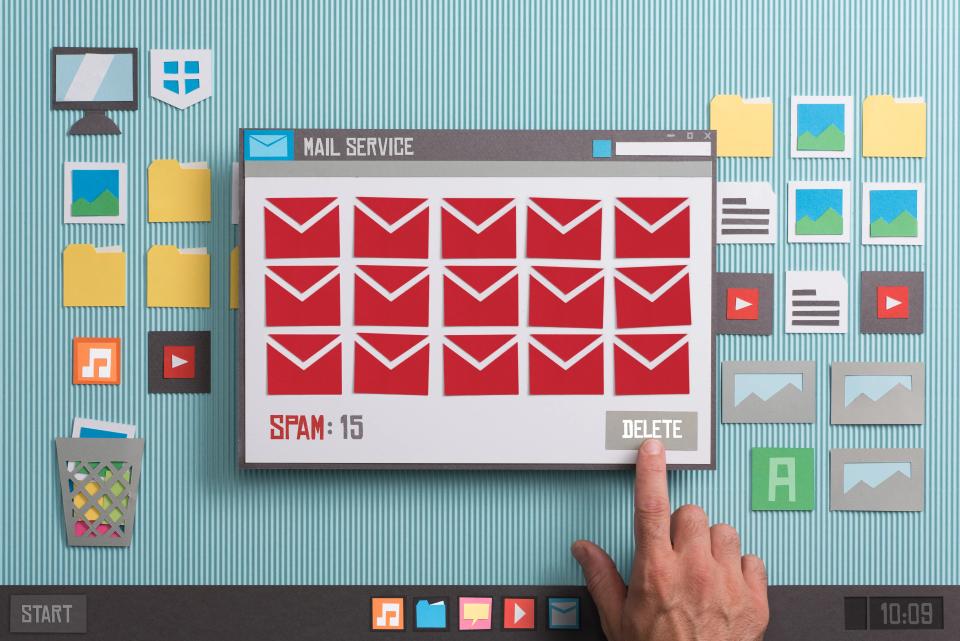Your brand. It’s been your bedrock, a symbol of trust built over years, maybe even generations. But here’s a hard question: in a world that’s gone digital, a world of fleeting attention spans and instant gratification, is your time-honored brand still turning heads? Or is it getting lost in the noise, struggling to connect with today’s digital-native customer who craves something fresh, something now?
A "legacy business" isn't just old; it's established, often with a powerful history and a solid reputation. Yet, these very strengths can become shackles if tied to traditional methods in an age demanding digital agility. You've earned your stripes, but the battlefield has changed.
Make no mistake: rebranding in this digital age isn't a frivolous makeover. It's about survival, about ensuring your hard-earned legacy doesn't just endure but thrives. According to McKinsey & Company, brands with advanced digital capabilities convert awareness to sales 2.5x faster than laggards, a stark reminder of the "digital Darwinism" at play.
This isn't just another article; it's your roadmap. We're diving deep into actionable creative rebranding strategies for legacy businesses, showing you how to refresh your appeal, connect with new audiences, and conquer the digital landscape, all while holding tight to the core values that made you who you are. Get ready to transform.
Why Rebrand? Recognizing the Signs & Seizing the Opportunities
Is your brand whispering, or is it shouting for a change? Sometimes the signs are subtle, a slow fade rather than a sudden crash. But ignoring them? That’s a gamble few legacy businesses can afford to take.
Common Triggers for Rebranding a Legacy Business
Are you seeing your market share slowly erode, your voice drowned out by newer, louder competitors? Perhaps your brand is unfairly stamped as "old-fashioned," a relic of a bygone era, struggling to attract the vibrant energy of younger customers or the sharpest new talent. As Entrepreneur magazine points out, a critical trigger for rebranding is when market perception lags behind internal innovation, especially if you've expanded services but your image hasn't caught up.
The market itself might be shifting beneath your feet, with new players changing the game, or your own business might have evolved, offering new services or embracing a new vision that your current branding simply doesn't reflect. These aren't just challenges; they are clarion calls for transformation. The desire to connect with modern values, like sustainability, can also be a powerful impetus for change.
Recognizing these triggers isn't about admitting defeat; it's about acknowledging the need to adapt, to evolve, to fight for your future relevance and dominance. It’s the first courageous step towards a powerful new chapter.
The Benefits of a Well-Executed Rebrand
Imagine this: a surge of new excitement around your brand, a fresh wave of customer engagement. This isn't a pipe dream; it's the direct result of a smart, strategic rebrand. You'll see your brand perception sharpen, becoming more appealing, more magnetic to your ideal audience.
This renewed vigor translates directly into a stronger competitive advantage, making you a formidable force once again. Customer loyalty deepens, and new customers, previously out of reach, are drawn into your orbit. A successful rebrand is your golden opportunity to align your business with modern values and powerfully leverage digital channels, ensuring you’re not just present online, but truly thriving.
At CaptivateClick, we've seen firsthand how a strategic approach to rebranding can unlock these incredible benefits, turning legacy into leverage. It’s about making your history a springboard, not an anchor.
The Foundation: Strategic Planning for Your Legacy Rebrand
Jumping into a rebrand without a rock-solid plan? That’s like setting sail in a storm without a compass. To navigate these waters successfully, you need strategy, insight, and a clear vision of your destination.
Step 1: Deep Dive - Brand Audit & Soul Searching
First, you must look inward. What is the absolute soul of your brand? Revisit your core mission, your vision, your non-negotiable values. What elements of your legacy must be preserved, cherished, and carried forward into this new era?
Then, turn your gaze outward. How do your current customers really see you? What about those potential customers you’re trying to reach, or the market at large? This demands honest investigation through surveys, social listening, and deep competitor analysis. As illustrated by Siegel+Gale’s transformative work with Nielsen, understanding both internal and external perceptions is crucial to identifying misalignments and opportunities.
How are your modern competitors positioning themselves? What are they doing right, and where are their weaknesses you can exploit? This brand audit isn't just data collection; it's an archaeological dig into the heart of your brand and its place in the world.
Step 2: Defining Your New North Star
With this deep understanding, it's time to chart your new course. What is your evolved brand purpose, your renewed promise to your customers in this digital age? You need to be crystal clear on this before you change a single pixel or word.
Who, precisely, is your target audience now? Develop detailed personas for these digital-age customers, understanding their desires, their pain points, their online behaviors. Then, set clear, measurable rebranding goals. Will you aim to increase website engagement by 30%, or attract 500 new younger customers within the next year? Vague hopes won’t cut it; you need concrete targets.
This is where a dedicated Brand Strategy, like the kind we develop at CaptivateClick, becomes invaluable. It bridges your cherished heritage with a bold, innovative future, ensuring your rebrand is not just cosmetic but deeply strategic.
Step 3: Assembling Your Rebranding Team
A rebrand is not a solo mission; it’s a collaborative quest. Internally, you need to identify key stakeholders – leaders from marketing, sales, operations, and even HR – who can champion the change and provide critical insights. Their buy-in is essential for a smooth transition.
But don't underestimate the immense value of an external perspective. Partnering with an experienced agency, like CaptivateClick, brings objectivity, specialized expertise, and a battle-tested understanding of the digital landscape. We can ask the tough questions, challenge outdated assumptions, and bring fresh creativity to the table, ensuring your rebrand is both visionary and viable.
This combined team, internal and external, becomes the engine driving your transformation, ensuring every decision is informed, strategic, and aligned with your ultimate goals.
Creative Rebranding Strategies for the Digital Frontier
Alright, the groundwork is laid. Now for the exciting part: unleashing creative strategies that will catapult your legacy brand into the digital spotlight, making it more relevant, engaging, and irresistible than ever before.
Strategy 1: Evolutionary Visual Identity – Modernizing, Not Erasing
Your visual identity – your logo, colors, typography – is your brand’s face to the world. For a legacy business, the key is evolution, not revolution. You want to modernize, to signal a fresh direction, without alienating the loyal customers who recognize and trust your established look. Think logo refresh rather than a complete, unrecognizable overhaul. According to MoldStud, cohesive visual identities improve customer perception by 60%, a compelling reason to invest in thoughtful updates.
Explore contemporary color palettes and typography that speak to modern aesthetics while still echoing your brand’s core personality. Update your imagery and photography style to reflect diversity, current trends, and the dynamic energy of your revitalized brand. Remember, even small, strategic tweaks can make a massive impact, signaling progress and relevance. For deeper insights into this, explore how to achieve brand transformation through logo design and visual storytelling.
This careful balance ensures your brand feels current and exciting, yet familiar and dependable. It’s about building on your history, not discarding it, and ensuring you have a cohesive brand identity through powerful visual storytelling.
Strategy 2: Digital-First Brand Experience
In today’s world, your website isn't just a brochure; it's your digital flagship, the central hub of your brand experience. It must be more than just visually appealing; it needs to be a powerhouse of functionality and user delight. This means modern UI/UX design for intuitive navigation, ensuring visitors can find what they need effortlessly.
Your website absolutely must be mobile-first responsive, looking and working flawlessly on every device. If you sell online, e-commerce optimization is non-negotiable. And behind the scenes, performance optimization and robust security are critical for trust and user satisfaction. A strategic website design is key to a cohesive brand identity, and it's vital to understand how to integrate branding and website design seamlessly.
Beyond the technical, craft a compelling online narrative. Update your "About Us" page, your mission statement, and your overall brand story to resonate with digital audiences. Ensure consistent visuals and messaging across all digital touchpoints, from your website to your social media profiles to your email signatures. This consistency is foundational, and a detailed guide on branding through website redesign can illuminate the path, especially when combining user experience and branding effectively.
Strategy 3: Reimagining Your Brand Voice & Content
How does your brand sound online? The formal, distant tone that might have worked in traditional media can fall flat in the conversational, interactive world of digital. It's time to adapt your brand voice to be more authentic, engaging, and, where appropriate, even a little less formal.
Content marketing is your new superpower for demonstrating relevance and expertise. Develop blogs, articles, and case studies that showcase your new brand direction and provide genuine value to your audience. This isn't just about selling; it's about educating, informing, and building trust, all while reaping significant SEO benefits. For instance, creating locally relevant content that ranks can powerfully connect your refreshed brand with your community.
Leverage social media strategically. Don't just be on every platform; choose the ones where your target audience congregates and create content that truly resonates, sparks conversation, and encourages sharing. This is your chance to build a vibrant online community around your evolved brand.
Strategy 4: Storytelling that Bridges Heritage and Future
Your legacy is a treasure trove of stories. Don't hide your history; frame it as a foundational strength, the bedrock upon which your exciting future is built. Highlight your journey, your evolution, and the milestones that have shaped you.
Use dynamic and engaging formats like video, infographics, and interactive content to tell your new story. Show, don't just tell, how your core values – the ones that have defined you for years – translate into modern practices and a forward-thinking vision. Adobe's analysis of the Sandals Resorts "Made of Caribbean" campaign, which increased bookings by 22% by intertwining local culture with modern luxury, perfectly illustrates how heritage can be a powerful differentiator.
This narrative approach creates an emotional connection, making your brand more relatable and memorable. It assures customers that while you're embracing the future, you haven't forgotten who you are.
Strategy 5: Engaging Your Community – Internal & External
A rebrand isn't something you do to people; it's something you do with them. Start internally. Involve your employees in the rebranding process, share the vision, and get their feedback. Their buy-in is crucial; they are your brand's most important ambassadors.
Externally, don't just spring the new brand on your audience. Tease it. Build anticipation. Create a sense of excitement and involve them in the journey where possible. Gather feedback along the way, making your customers feel valued and part of this evolution.
This inclusive approach fosters a sense of ownership and loyalty, both inside and outside your organization. It turns your rebrand from a corporate mandate into a shared celebration of progress.
Launching Your Reimagined Brand in the Digital Age
The strategy is set, the creative is polished. Now, it’s time for the grand reveal. Launching your reimagined brand effectively in the digital age requires precision, coordination, and a multi-channel marketing blitz.
The Big Reveal
This is your moment. Plan a coordinated launch across all your key channels simultaneously. Your new website goes live, social media profiles are updated with the new branding, and an email announcement goes out to your database. Design Force advocates for synchronized updates across digital assets to avoid brand fragmentation, ensuring a unified and impactful first impression.
Consider a "soft launch" phase, as suggested by Design Force, to test messaging with a segment of loyal customers before the full public rollout. This allows for any final tweaks and builds internal confidence. The goal is a seamless transition that excites and clearly communicates your new brand identity.
Every touchpoint should sing the same new song, creating an immediate and powerful statement about your brand's evolution. This isn't just a launch; it's a declaration.
Digital Marketing Push
Once live, you need to drive awareness and traffic. Your SEO strategy is paramount; ensure your new brand is discoverable for relevant keywords. This involves both technical SEO for your new site and on-page optimization for all your new content.
Ignite immediate interest with Search Engine Marketing (SEM) campaigns, including Pay-Per-Click (PPC) advertising on Google Ads and targeted social media ads. This drives qualified traffic to your new digital flagship and builds rapid awareness. To maximize impact, consider leveraging AI automation for smarter digital marketing campaigns to enhance efficiency and targeting.
Don't forget your existing network. Announce the change through targeted email outreach and LinkedIn outreach to existing contacts, past customers, and potential new leads. For B2B companies, optimizing cold email outreach with AI tools can significantly boost the effectiveness of this announcement. And, of course, AI automation can supercharge your lead generation efforts post-rebrand.
Public Relations & Influencer Collaboration
To amplify your launch, consider strategic public relations efforts. A well-crafted press release can generate media coverage, lending third-party credibility to your rebrand. Think about publications and journalists who reach your target audience.
Influencer collaboration can also be highly effective, especially if you're targeting a younger demographic or a niche market. Partnering with relevant influencers to share your new brand story can create authentic buzz and reach audiences you might not otherwise access. Burberry’s 2023 rebrand, for example, effectively leveraged Instagram Stories and influencer partnerships to generate excitement.
These efforts extend your reach beyond your immediate digital footprint, creating wider awareness and positive sentiment around your brand's transformation.
Case Studies: Legacy Brands That Got It Right
Theory is one thing, but seeing it in action is another. Let's look at legacy brands that faced the digital crossroads, chose bold rebranding, and emerged stronger, more relevant, and more successful.
Example 1: Old Spice – From Grandad’s Scent to Viral Sensation
Remember Old Spice? For decades, it was the scent your grandfather wore. The challenge was clear: an aging demographic and a brand perception stuck firmly in the past. They needed to connect with millennials, a generation that barely knew they existed.
Their strategy was audacious. They didn't just tweak the logo; they completely overhauled their messaging with the "The Man Your Man Could Smell Like" campaign. As Epstein Creative highlights, by embracing absurdist humor and viral social media engagement, Old Spice became a cultural phenomenon. They retained their core product quality but wrapped it in an entirely new, wildly entertaining narrative.
The outcome? A staggering 107% sales increase within six months. Old Spice proved that even a deeply entrenched legacy brand can reinvent itself for a new generation by taking creative risks and understanding the digital zeitgeist.
Example 2: Nielsen – Powering a Better Media Future
Nielsen, a name synonymous with media metrics for nearly a century, faced a different challenge. Their perception was tied to traditional broadcast ratings in an increasingly complex, multi-platform digital media landscape. They needed to communicate their evolution and broader capabilities.
Working with Siegel+Gale, Nielsen's strategy involved reframing their entire purpose. They shifted from simply "broadcast metrics" to the more expansive and inspiring mission of "Powering a better media future for all people". This involved a deep internal and external audit, integrating their global data panel into their brand narrative, and updating their visual identity to blend humanity with tech-forward imagery.
The outcome was a revitalized brand that clearly communicated its relevance and leadership in the modern media ecosystem. Nielsen demonstrated how a strategic redefinition of purpose, supported by a refreshed identity, can powerfully reposition a legacy company for continued success.
Key Takeaways
What do these successes tell us? First, courage pays off. Both Old Spice and Nielsen took bold steps. Second, understanding your new target audience is paramount. Third, it's not about erasing your heritage but reframing it within a modern context.
These brands didn't just change their look; they changed their conversation, their connection, and ultimately, their trajectory. Their stories are a testament to the transformative power of strategic, creative rebranding in the digital age.
Measuring Success & Sustaining Momentum
Your revitalized brand is launched. The confetti has settled. But the work isn’t over; in many ways, it’s just beginning. How do you know if your rebrand is truly hitting the mark, and how do you keep that fresh energy alive?
Key Performance Indicators (KPIs) to Track
You need to measure what matters. Track your website traffic: are more people visiting? Are they staying longer (time on page) and engaging more deeply (lower bounce rate)? Crucially, are your conversion rates – for leads, sales, or other desired actions – improving? Huddle Creative notes that dirty data can cost companies up to 20% in lost revenue, so ensure your tracking is clean.
Monitor your social media engagement: are likes, shares, comments, and follower growth trending upwards? What’s the brand sentiment out there – are people talking positively about your new identity? Keep an eye on your search engine rankings for your new brand terms and relevant keywords. These KPIs provide tangible proof of your rebrand's impact.
Don't forget internal metrics. Huddle Creative also points out that internal buy-in boosts campaign authenticity by 40%. Are your employees engaged and enthusiastic ambassadors of the new brand? This internal alignment is a powerful, often overlooked, KPI.
The Importance of Ongoing Brand Management & Iteration
A rebrand isn't a "set it and forget it" project. The digital landscape is constantly shifting, and so are customer expectations. Ongoing brand management is essential to sustain momentum and ensure your brand remains relevant.
Continuously monitor your KPIs, listen to customer feedback, and be prepared to iterate. A/B testing different messages, visuals, or calls to action can help you fine-tune your approach for maximum impact. This commitment to continuous improvement is what separates brands that merely refresh from those that truly transform and lead.
Think of your brand as a living entity. It needs consistent nurturing, attention, and adaptation to thrive in the long term. This is where ongoing strategic support and services like reliable hosting and maintenance become critical partners in your brand's journey.
Conclusion: Your Legacy is Your Launchpad, Not Your Anchor
Let's be clear: undertaking a rebrand, especially for a business rich in history, is a significant endeavor. It demands courage, strategic thinking, and a willingness to embrace change. But the alternative – clinging to the past while the world speeds by – is far riskier.
Rebranding isn't about discarding your hard-earned legacy; it's about polishing that gem until it shines brilliantly for a new generation. It’s about evolution, honoring the core values and history that made you strong, while boldly stepping into the future. As Adobe's insights on harnessing brand heritage suggest, your history can be a powerful differentiator, a source of authenticity that resonates deeply in today's market.
You have the history, the experience, the foundation. Now, it’s time to fuse that with digital savvy, fresh creativity, and a relentless focus on today’s customer. Your legacy is not an anchor holding you back; it's the powerful launchpad for your next chapter of success.













